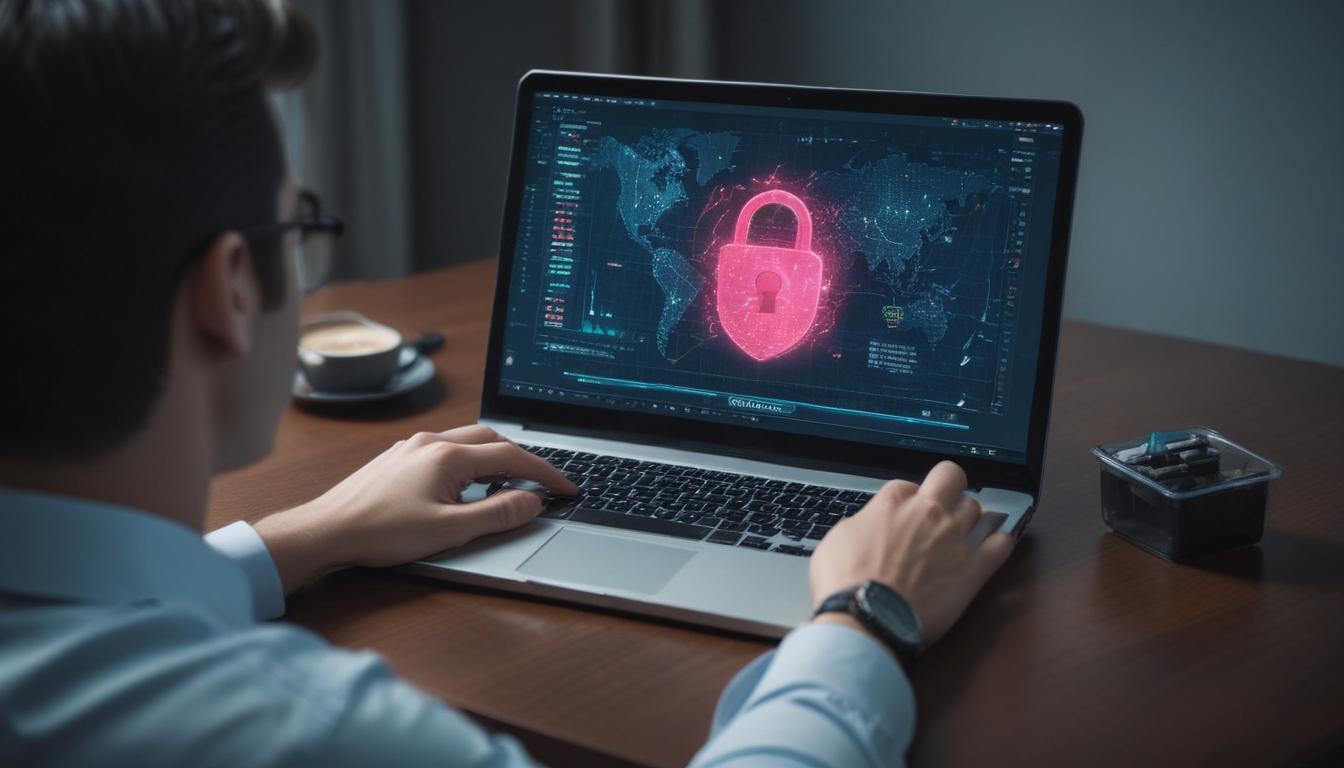Now Reading: Secure Your Financial Data Now
- 01
Secure Your Financial Data Now
Secure Your Financial Data Now

Cybersecurity in Finance Protecting Your Financial Data
That nagging feeling in the back of your mind every time you log into your bank account or approve an online purchase? You are not alone. In a world where our financial lives are increasingly digital, the fear of cyber threats, data breaches, and identity theft is a constant and valid concern. The headlines are filled with stories of sophisticated scams and massive data leaks, leaving many of us feeling vulnerable and unsure of how to protect our hard-earned money and sensitive information.
The good news is that you are not powerless in this fight. While cybercriminals are always evolving their tactics, the power to secure your financial world rests firmly in your hands. You don’t need to be a technology wizard to build a strong defense. By understanding the risks and implementing a few key, powerful habits, you can transform that feeling of anxiety into one of confidence and control. This guide will walk you through the essential strategies and proactive steps to fortify your digital finances and keep your data safe from prying eyes.
Why Your Financial Data is a Prime Target
To a cybercriminal, your financial information is digital gold. It’s far more valuable than just the balance in your checking account. Stolen bank login credentials, credit card numbers, and personal identifiers can be bundled and sold on the dark web or used to perpetrate a wide range of devastating crimes. Criminals can use this data to drain your accounts, open new lines of credit in your name, file fraudulent tax returns, or even commit complex identity theft that can take years to unravel. Your data is the key that unlocks a treasure trove of fraudulent opportunities for them.
These criminals employ a variety of sophisticated methods to get their hands on your information. Phishing attacks, where they send deceptive emails or text messages masquerading as your bank, are incredibly common. They might also use malware, malicious software that infects your computer or phone to secretly record your keystrokes and steal passwords. Furthermore, they often exploit vulnerabilities in the security of third-party companies you do business with, gaining access to your data through large-scale breaches. Understanding these threats is the first step toward building an effective defense against them.

Essential Steps to Fortify Your Digital Finances
Taking control of your financial security begins with building a strong foundation. These are the non-negotiable actions that create immediate and significant barriers against the most common types of cyberattacks. Think of them as locking the doors and windows of your digital home.
Build a Fortress with Strong Passwords and Multi Factor Authentication
Your password is often the only thing standing between a criminal and your financial accounts. The common practice of using simple, memorable passwords or reusing the same password across multiple sites is a massive security risk. If one of those sites is breached, criminals will use that same password to try to access your more sensitive accounts, like banking and email. The solution is to use a unique, long, and complex password for every single one of your online accounts. The easiest way to manage this is with a reputable password manager, a secure digital vault that creates and stores powerful passwords for you.
Even the strongest password can be compromised. That is why multi-factor authentication (MFA), also known as two-factor authentication (2FA), is absolutely critical. MFA adds a second layer of security by requiring you to provide more than just your password to log in. This second factor is typically something you have, like a one-time code sent to your phone via an app or text message. This means that even if a criminal steals your password, they cannot access your account without also having physical access to your phone. You should enable MFA on every financial account, email account, and any other important service that offers it.
Recognize and Defeat Phishing Scams
Phishing remains one of the most effective and widely used attack methods because it preys on human psychology rather than just technical flaws. These scams arrive as emails, text messages (a practice called “smishing”), or even phone calls that appear to be from a legitimate institution, like your bank, a credit card company, or a government agency. They create a sense of urgency, fear, or curiosity, pressuring you to click a malicious link, download a compromised attachment, or reveal personal information. The messages often contain threats of account suspension or promise unbelievable rewards to trick you into acting without thinking.
Developing a healthy sense of skepticism is your best weapon against phishing. Never click on links or download attachments from unsolicited or suspicious messages. Instead of using the link provided in an email, always go directly to the company’s official website by typing the address into your browser yourself. Scrutinize the sender’s email address for slight misspellings. Hover your mouse over any links to see the actual destination URL before clicking. Remember, your bank will never ask you for your full password, PIN, or login codes via email or text. When in doubt, delete the message and contact the institution through a verified phone number or their official app.
Proactive Habits for Long Term Security
Cybersecurity is not a one-time setup; it is an ongoing practice. Cultivating good digital habits is essential for maintaining your security over the long term. These proactive measures ensure your defenses remain strong and help you spot potential trouble before it escalates into a major crisis.
One of the most powerful habits you can develop is the regular review of your financial statements. At least once a month, go through your bank, credit card, and investment account statements line by line. Look for any transactions, no matter how small, that you do not recognize. Many criminals test stolen card numbers with tiny purchases first. Setting up real-time transaction alerts via email or text message for your accounts can also provide immediate notification of any activity, allowing you to react instantly to potential fraud.
Finally, keeping your digital environment clean and up-to-date is a crucial part of your defense. Always install software updates for your computer’s operating system, your web browser, and all your applications as soon as they become available. These updates frequently contain critical patches for security vulnerabilities that criminals could otherwise exploit. You should also ensure your home Wi-Fi network is secured with a strong, unique password and uses WPA2 or WPA3 encryption. An unsecured network is like an open door, allowing anyone nearby to potentially snoop on your internet activity and intercept sensitive data. Protecting your financial data is a continuous journey, but with these habits, it becomes a simple and manageable part of your routine.


































